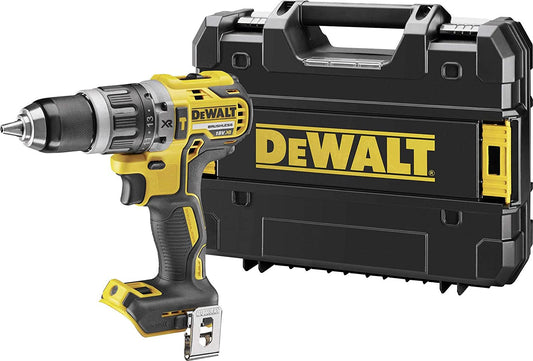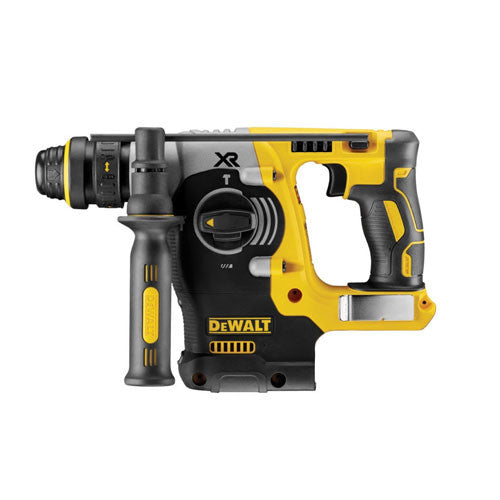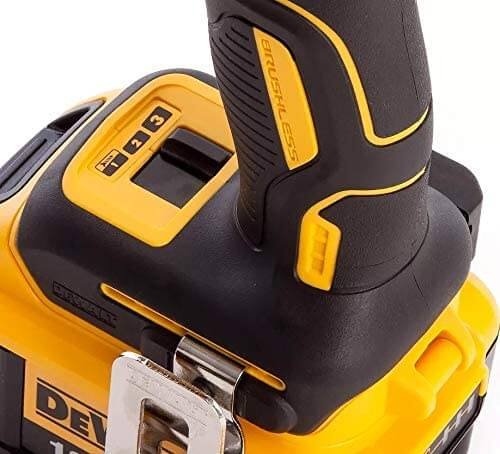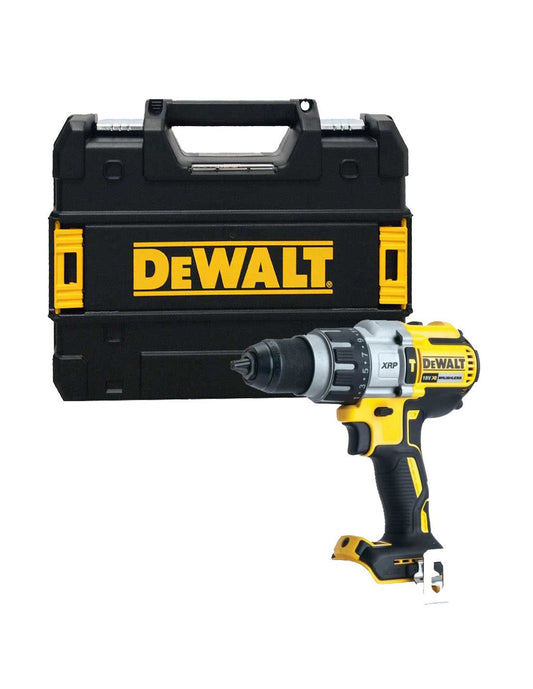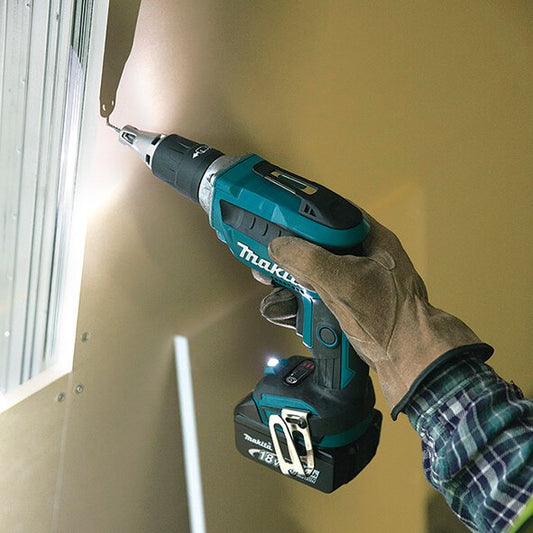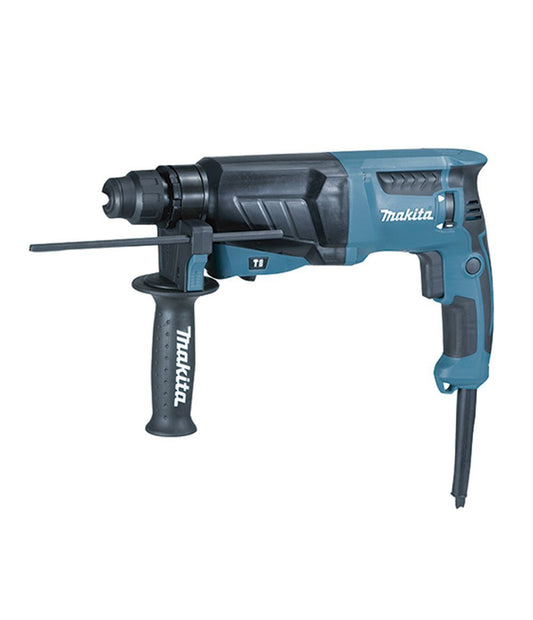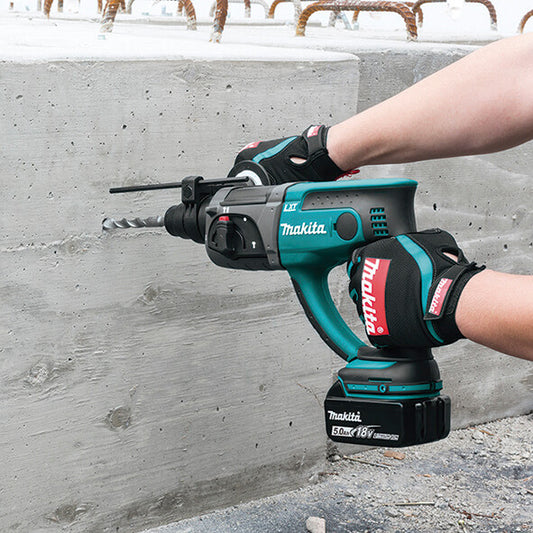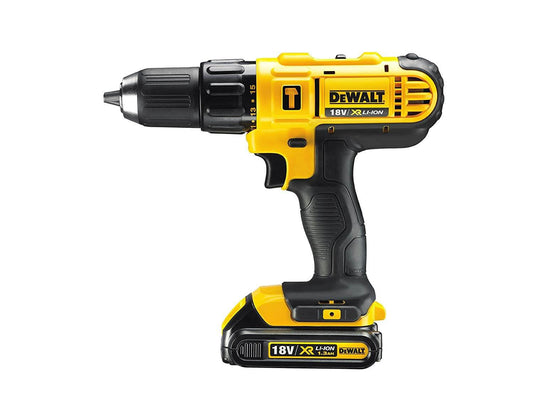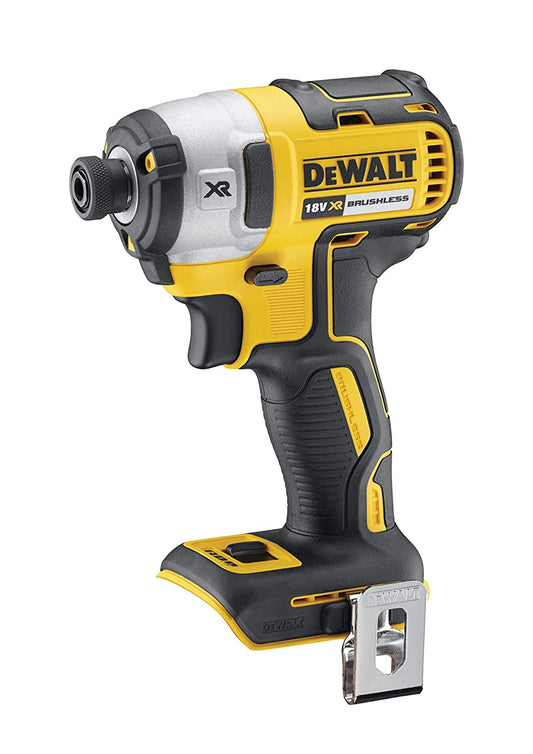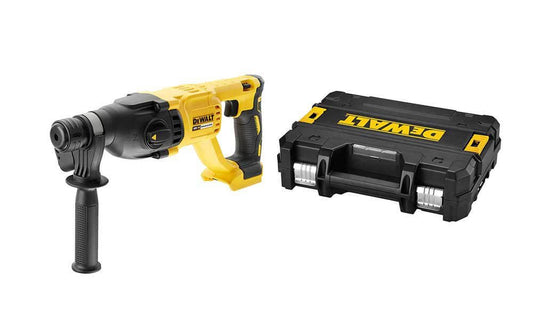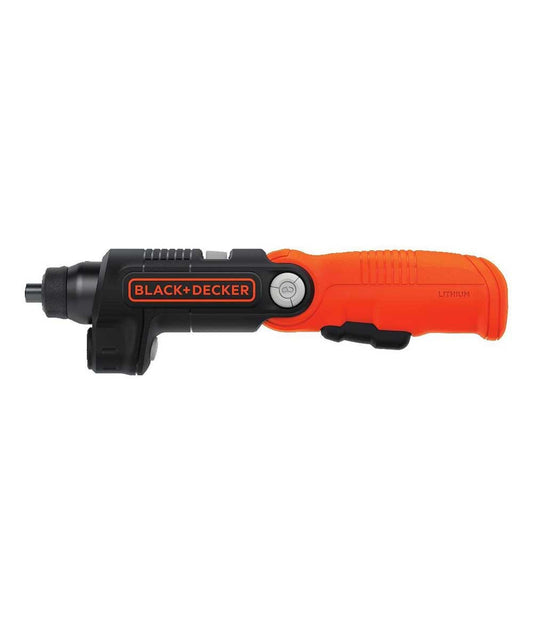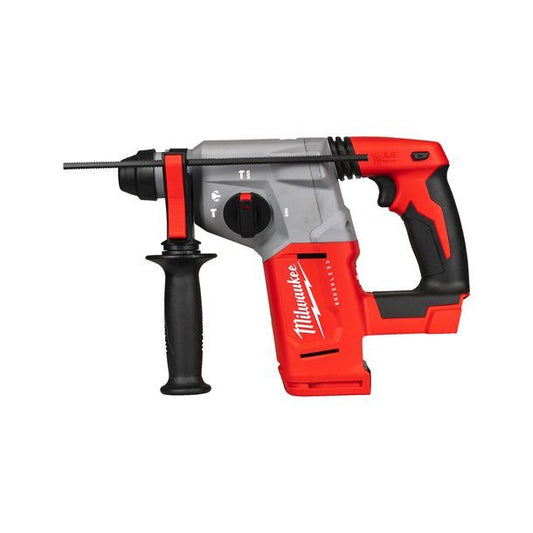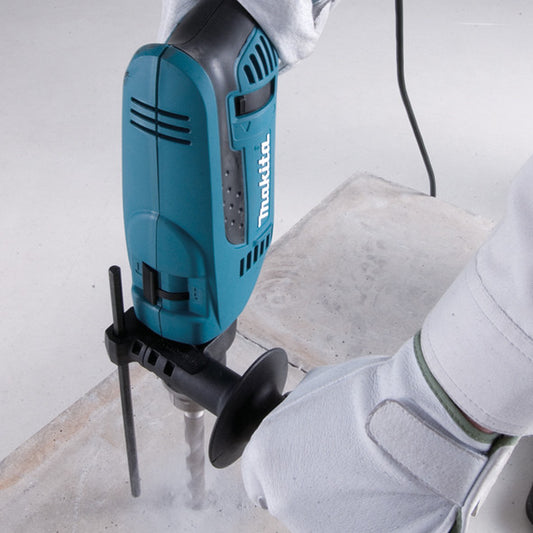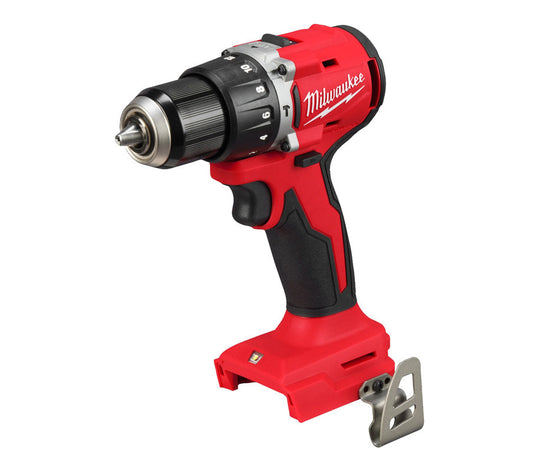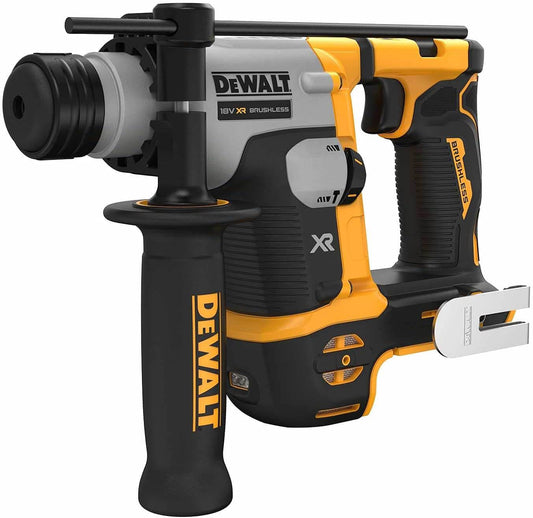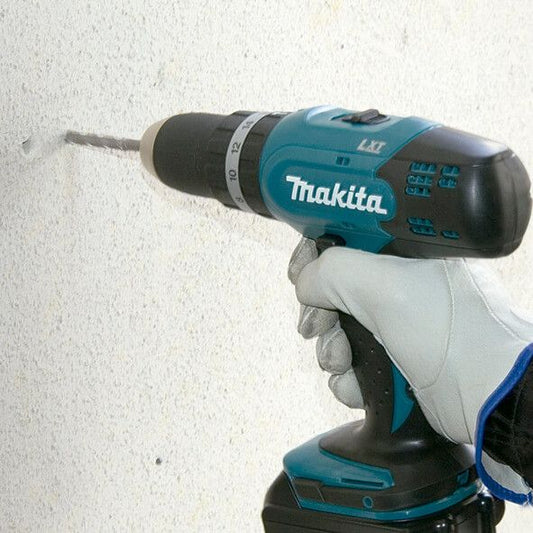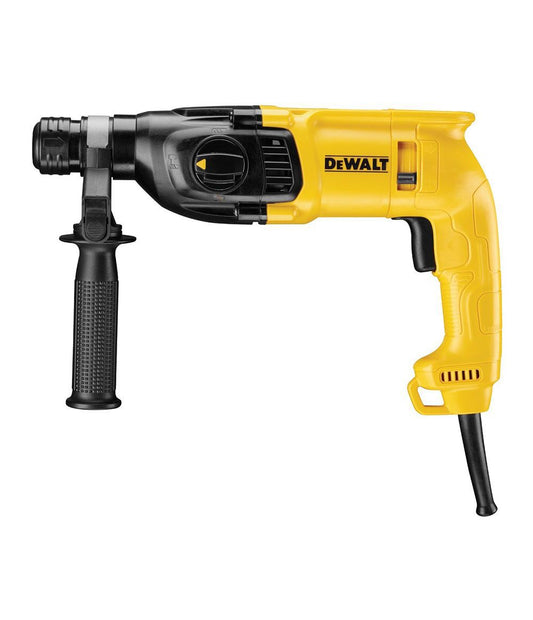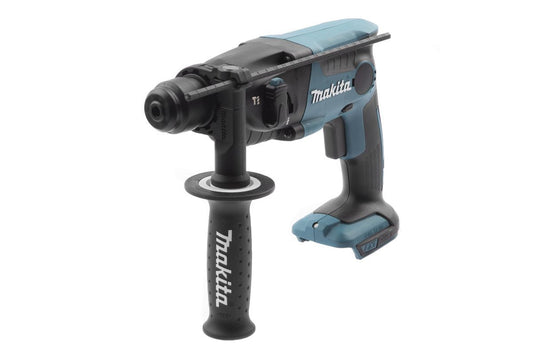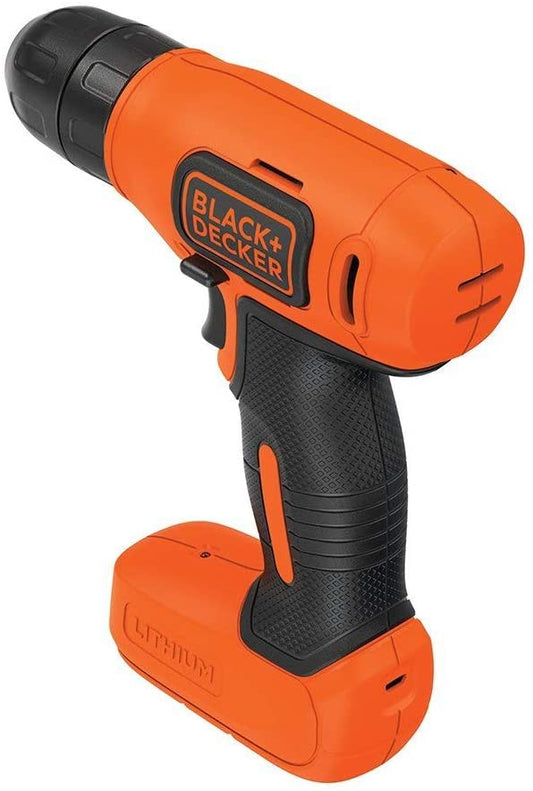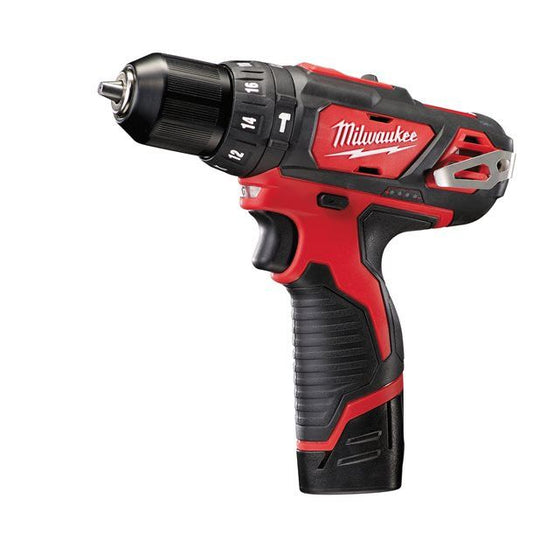Quality drill in Brikum
In the world of DIY and construction, a tool that stands out for its versatility and necessity is, without a doubt, the drill. This instrument has become an indispensable ally for both professionals and DIY enthusiasts, offering practical and efficient solutions for a wide range of jobs. With the drill, you can perform everything from simple to more complex tasks, adapting to different materials and needs.
Choosing the right drill can make all the difference in your DIY and construction projects. For this reason, at Brikum we offer you a careful selection of drills, designed to satisfy all your needs. Whether you are looking for a hammer drill to drill through harder materials, a cordless drill to enjoy greater freedom of movement or a column drill for precision work, in our ecommerce you will find the perfect model for you.
The drill is not just a tool; It is the perfect companion to carry out your ideas and projects. Its versatility makes it a key piece in any toolbox, capable of adapting to different types of surfaces and jobs. From hanging a painting to assembling furniture or carrying out more complex installations, the drill is your best ally.
In addition, the use of the drill has been simplified over time, offering more ergonomic and easy-to-handle models. This means that regardless of your experience level, you will be able to find a drill that fits your skills and needs. At Brikum, we understand the importance of having quality tools that make your work easier and more efficient. For this reason, our catalog includes drills from the most recognized and reliable brands on the market, ensuring durability and performance.
But the drill isn't just about power and efficiency; It is also important to consider safety and comfort during use. Our models feature advanced safety systems and designs that minimize fatigue, allowing you to work more comfortably and for longer periods. So, whether you are carrying out a small repair at home or working on a more ambitious construction project, the drill becomes an essential tool that guarantees professional results.
At Brikum, we are committed to offering you not only the best drills, but also the advice and support you need to choose the most suitable model. We understand that each project is unique and that you require a tool that adapts perfectly to your needs. Therefore, our team of experts is always available to guide you, offering practical advice and tailored solutions.
We invite you to explore our wide range of drills at Brikum, where quality, innovation and service meet to provide you with the best purchasing experience. With us, you'll discover that the ideal drill for your DIY and construction projects is just a few clicks away. Trusting Brikum is choosing excellence and commitment to each task you undertake, because we understand the importance of each project and the need to have the appropriate tools to carry it out.
Battery drill
A battery-powered drill is a portable power tool that has revolutionized DIY and construction tasks, allowing users greater freedom of movement and flexibility in their projects. This type of drill is powered by a rechargeable battery, eliminating the need for cords and nearby outlets, making it ideal for working anywhere from a home workshop to a construction site.
The convenience of battery-operated drills is undeniable. Its ability to operate without physical restrictions makes it easier to access difficult places, such as stairs, outdoors or tight spaces where a cable could be an obstacle. Additionally, the absence of cables reduces the risk of tripping over or damaging work material, making battery-powered drills a safe and efficient option.
Advances in battery technology have significantly improved the performance of these drills. Lithium-ion batteries, for example, offer an excellent power-to-weight ratio, do not suffer from the memory effect and can be recharged quickly, making them more efficient compared to previous technologies such as NiCd (nickel-cadmium) or NiMH ( nickel-metal hydride). These improvements have led to lighter, more powerful drills with longer battery life, capable of tackling demanding tasks with fewer interruptions for recharging.
When selecting a battery-powered drill, it is important to consider several factors. Power, measured in volts, will directly influence the drill's ability to do heavy work. Higher voltage generally means more power, but it can also increase the weight of the drill. Therefore, it is crucial to find a balance between the power needed for your projects and the comfort of use.
Battery capacity, expressed in ampere hours (Ah), is another crucial aspect. A greater capacity ensures greater autonomy of the drill, allowing you to work longer without the need for frequent recharges. However, batteries with higher capacity are typically heavier and more expensive, so you will need to evaluate what is most important for your specific needs.
Another factor to consider is the battery charging time. Some drill models come with fast chargers that can recharge the batteries in less than an hour, which can be very convenient for long jobs or when batteries are low.
Additionally, many battery-powered drills offer additional features that can be helpful, such as multiple speed settings, built-in LED lights to illuminate the work area, and quick-release chucks that make it easy to change bits and accessories without additional tools. Ergonomics are also important; Look for a drill with a design that fits comfortably in your hand, with non-slip materials and a balanced weight to minimize fatigue during use.
Cordless drill
A cordless drill is an essential and highly versatile power tool for any DIYer or professional. The main advantage of cordless drills over their corded counterparts is the portability and freedom of movement they offer, eliminating the need to have a nearby electrical power source or deal with cables that can be cumbersome and restrict your working range.
Cordless drills operate using rechargeable batteries, commonly lithium-ion, which have revolutionized the market thanks to their lightness, fast charging capacity and long battery life without suffering from the memory effect that reduced the efficiency of older batteries. This technology allows cordless drills to be just as powerful as many corded models, capable of performing a wide range of tasks from simple drilling to the most demanding screwdriving tasks.
When choosing a cordless drill, it is important to consider several factors to ensure it meets your needs. Battery voltage is an indicator of drill power; Models generally range from 12V up to 20V or more for professional applications. Higher voltage generally means more power and torque, but it can also increase the weight of the drill.
Battery capacity, measured in amp hours (Ah), directly affects battery life per charge. A larger capacity allows you to work longer without the need for frequent recharging, which is especially useful on long jobs or far from power sources.
Cordless drills also offer features like multiple speed and torque settings, making them suitable for a variety of materials and screw types. The presence of a keyless chuck makes it easy to change bits quickly, and additional settings such as hammer drill mode on some models further expand its usefulness, allowing drilling in harder materials such as concrete.
Ergonomic design is another crucial aspect; A good cordless drill should be comfortable to hold and operate, even during extended periods of use. Features like weight balance, soft grip, and built-in LED light to illuminate the work area can make a big difference in ease of use and work efficiency.
Finally, many manufacturers offer their cordless drills as part of a platform of tools that share the same battery type and voltage. This means you can use the same battery to operate a variety of tools, from saws to sanders, representing excellent value for money and convenience.
hammer drill
A hammer drill is an essential and highly versatile tool for any DIY enthusiast or construction professional. This type of drill is distinguished from traditional models by its ability to perform two functions simultaneously: rotating the bit and providing a percussive or tapping motion. This combination allows you to drill more effectively into hard materials such as concrete, stone or brick, where a conventional drill may not be sufficient.
The main advantage of the hammer drill lies in its percussion mechanism, which facilitates penetration into resistant materials through rapid impact movements. This reduces the effort required and significantly speeds up the drilling process. In addition, most hammer drill models have the option to deactivate the hammer function, allowing them to be used as a conventional drill to work on wood, metal or plastic, making them extremely versatile and practical tools.
When choosing a hammer drill, it is important to consider several factors to ensure it fits your specific needs. Motor power is crucial as it determines the drill's ability to handle different tasks and materials. Models with higher power will be more effective on hard materials, but they also tend to be heavier. Variable speed is another important feature as it allows you to adjust the drilling speed depending on the material to obtain better results and avoid damage.
The ergonomics and design of the hammer drill are also aspects to take into account. A good drill should be comfortable to handle, with a balanced design that reduces fatigue during prolonged use. Many models include additional features such as soft grips, vibration reduction systems, and integrated LED lights to improve visibility in dimly lit work areas.
As for power, hammer drills are available in corded and cordless versions. Corded models typically offer constant power and are ideal for long-term work or in conditions where mobility is not required. On the other hand, cordless hammer drills offer greater freedom of movement and are perfect for work in places without easy access to power outlets. However, it is important to consider battery life and charging time when opting for a wireless model.
Battery-powered hammer drill
The battery-powered hammer drill has become an indispensable tool for professionals and DIY enthusiasts, thanks to its combination of power, versatility and the convenience of being cordless. This type of drill offers the ability to drill into hard materials such as concrete, stone or brick, thanks to its percussion mechanism, while providing freedom of movement without being limited by a cable. The mobility and ease of use offered by these drills make them ideal for work in places that are difficult to access or where there is no availability of a nearby electrical power source.
One of the main advantages of battery-powered hammer drills is their portability. By not depending on a direct connection to the power, you can take them with you anywhere, facilitating work outdoors, at heights or in confined spaces. This makes them especially useful in construction sites, renovations and in the daily maintenance of homes and buildings.
However, when choosing a battery-powered hammer drill, there are several important aspects to consider to ensure it fits your needs. The power and voltage of the battery are crucial as they determine the ability of the drill to cope with different materials and the life of the battery under continuous use. Higher voltage models offer more power and durability, but can be heavier and more expensive.
Battery capacity, measured in ampere hours (Ah), is another important factor. A higher capacity indicates that the battery can store more energy, which translates to longer usage time between charges. This is especially relevant on long projects or when working away from power sources for recharging.
Battery technology has also advanced significantly, with many brands opting for lithium-ion batteries due to their lightness, higher capacity and lack of memory effect, allowing them to be recharged at any time without reducing their lifespan. Additionally, some battery-powered hammer drills come with additional features such as multiple speed settings, built-in LED lights to illuminate the work area, and easy-change chucks for quick bit replacement.
Another aspect to take into account is the ergonomic design and weight of the drill. A good battery-powered hammer drill should be comfortable to hold and operate, especially during extended periods of use. Ergonomic models minimize fatigue and stress on hands and arms, allowing for more efficient and safer work.
Finally, many manufacturers offer battery-powered hammer drills within cordless tool platforms, allowing the same battery to be used for different tools. This can be a huge advantage as it reduces the cost and storage space needed for multiple batteries and chargers.
Hammer
The hammer is one of the oldest and most fundamental hand tools in a wide variety of trades, including carpentry, construction, metalworking and many other manual jobs. Its simple but effective design makes it an indispensable tool for striking, setting or extracting nails, as well as shaping or breaking different materials.
There are several types of hammers, each designed for specific purposes. Some of the most common include:
Claw hammer: It is the most recognized type and used in carpentry work. Its flat head is used for striking, while the rear part, the "nail", is designed to extract nails. It is an essential tool for any project involving wood.
Ball Hammer: Commonly used in metalworking, the ball hammer has a round head on one side that is used to shape metal and smooth surfaces.
Rock hammer: This type has a flat head on one side and a conical tip on the other. It is useful for jobs that require precise strikes, such as mechanics or blacksmithing.
Rubber Hammer: Designed to apply force without damaging delicate surfaces. The rubber head is ideal for assembling wooden parts without marking them or for working with sheet metal.
Demolition Hammer: With a much heavier head, this hammer is used to break up hard materials such as concrete. It is often used in renovations and demolition work.
Choosing the right hammer depends on the job to be done. Important considerations include the weight of the head, which can vary from a few ounces to several kilograms, depending on the type of hammer and the job for which it is designed. A heavier weight provides more striking force, but also requires more strength from the user and can increase fatigue. Handle length is also important, as a longer handle offers more leverage and therefore more hitting power, but can be harder to control for precision work.
The handle material is another factor to consider. The wooden handles absorb shock well and offer a classic feel, but can break under heavy use. Fiberglass and metal handles are more durable and impact resistant, but may transmit more vibration to the user.
Rubber hammer
The rubber hammer is an essential tool in various fields, from construction and carpentry to laying tile and working with sheet metal. Unlike traditional steel hammers, the rubber hammer is designed to apply force without damaging the surface being worked on. Its soft rubber head cushions impact, making it ideal for tasks that require a more delicate touch.
One of the main advantages of the rubber hammer is its ability to hit hard or delicate surfaces without leaving marks, dents or damage. This makes it indispensable in the installation of wooden, laminate, ceramic or any other material floors where the aesthetic integrity of the surface is crucial. Additionally, it is widely used in the automotive industry and furniture manufacturing, where surface finish should not be compromised.
The design of a rubber hammer typically includes a solid or semi-solid rubber head mounted on a handle, which may be made of wood, fiberglass, or metal, depending on the model and intended use. The rubber can be of different degrees of hardness, thus adapting to a wide range of applications. The softer versions are perfect for very delicate jobs, while the harder versions are used in applications that require more strength but without the risk of damaging the work surface.
Another important feature of the rubber hammer is its versatility. Some models come with interchangeable heads of different sizes and hardnesses, allowing the user to adjust the tool specifically for the job at hand. This flexibility makes it even more valuable in environments where multiple types of materials are worked.
Ergonomics also play a vital role in the design of these hammers. The handles are designed to offer a comfortable and secure grip, reducing user fatigue during prolonged use. Additionally, the overall balance of the tool ensures that the proper amount of force can be applied without excessive effort, improving work accuracy and efficiency.
Rotary hammer
The hammer hammer, also known as a demolition or rotary hammer, is a powerful power tool designed for heavy-duty drilling, chiseling and demolition work, especially in very hard materials such as concrete, stone or asphalt. Unlike hammer drills, hammer hammers specialize in tasks that require greater impact force, making them ideal for construction, renovation and demolition work.
The main feature of a hammer hammer is its striking action mechanism, which combines rotation with percussion to achieve effective drilling in extremely hard materials. This mechanism allows the tool to deliver significantly greater impact energy compared to a hammer drill, making it easier to perform tasks that would be nearly impossible or very slow to complete with other tools.
Additionally, many modern hammer drills offer additional features such as variable speed control, safety clutch to protect the user if the bit gets stuck, and selectable operating modes (rotation only, hammer only, or a combination of both) to accommodate different applications. kinds of work.
It is important to mention that, given their specific design for heavy impact work, hammer drills are not suitable for fine or delicate drilling tasks in materials such as wood or metal. For such jobs, it would be more appropriate to use a drill/driver or hammer drill.


